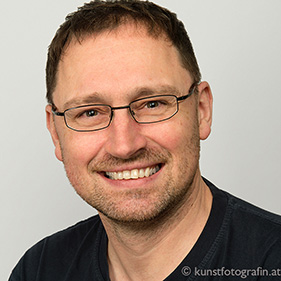Collection
Singularity theorems, causality, and all that (SCRI21)
- Submission status
- Closed
Roger Penrose shared the 2020 Nobel Prize in Physics 2020 for "the discovery that black hole formation is a robust prediction of the general theory of relativity", that is, for his 1965 gravitational collapse singularity theorem. Jointly with his 1963 study of the conformal boundary, Penrose's 1965 theorem marked the beginning of causality methods in mathematical relativity giving impulse to mathematical relativity itself.
In 2021, an online meeting honored Roger Penrose's accomplishments in mathematical relativity, particularly his use of global differential geometric methods in general relativity. Given the extent of Penrose's contributions, the idea was to focus on themes more closely related to the Nobel Prize motivation and to Penrose's mathematical methods:
1) Causality theory and singularity theorems (including abstract frameworks, low differentiability studies, weakened energy conditions), 2) Causal/conformal boundaries, 3) Cosmic censorship (mostly from a differential geometric viewpoint).
This article collection is based on contributions from this meeting, which gathered researchers who use Penrose's differential geometric methods or who have an interest in them and some perspectives to share. We wish that it summarizes the present status of mathematical relativity research in the above areas.
Editors
-
Ettore Minguzzi
Dipartimento di Matematica e Informatica “U. Dini” Università degli Studi di Firenze Via S. Marta 3 50139 Firenze Italy
-
Piotr T. Chruściel
University of Vienna Faculty of Physics and Research platform TURIS Boltzmanngasse 5 1090 Vienna Austria
-
Gregory J. Galloway
Department of Mathematics University of Miami Coral Gables, FL 33124 USA
-
Michael Kunzinger
Faculty of Mathematics University of Vienna Oskar-Morgenstern-Platz 1 1090 Vienna Austria
-
Roland Steinbauer
Faculty of Mathematics University of Vienna Oskar-Morgenstern-Platz 1 1090 Vienna Austria
Articles (20 in this collection)
-
-
Exact parallel waves in general relativity
Authors
- Cian Roche
- Amir Babak Aazami
- Carla Cederbaum
- Content type: Review Article
- Open Access
- Published: 16 February 2023
- Article: 40

-
Functors in Lorentzian geometry: three variations on a theme
Authors
- Olaf Müller
- Content type: Research Article
- Open Access
- Published: 14 February 2023
- Article: 39

-
Null geodesics from ladder molecules
Authors
- Anish Bhattacharya
- Abhishek Mathur
- Sumati Surya
- Content type: Research Article
- Published: 04 February 2023
- Article: 32

-
Conformal Cyclic Cosmology, gravitational entropy and quantum information
Authors
- Michał Eckstein
- Content type: Research Article
- Open Access
- Published: 28 January 2023
- Article: 26

-
Ricci fall-off in static and stationary non-singular spacetimes, revisited: the null geodesic method
Authors
- David Garfinkle
- Stacey G. Harris
- Content type: Research Article
- Published: 20 January 2023
- Article: 17
-
Spacetime singularities and curvature blow-ups
Authors
- István Rácz
- Content type: Research Article
- Open Access
- Published: 20 December 2022
- Article: 3
-
The influence of Penrose’s singularity theorem in general relativity
Authors
- José M. M. Senovilla
- Content type: Review Article
- Published: 23 November 2022
- Article: 151

-
An anisotropic gravity theory
Authors
- A. García-Parrado
- E. Minguzzi
- Content type: Research Article
- Open Access
- Published: 22 November 2022
- Article: 150
-
Omniscient foliations and the geometry of cosmological spacetimes
Authors
- Ivan P. Costa e Silva
- José L. Flores
- Jónatan Herrera
- Content type: Research Article
- Published: 18 November 2022
- Article: 147
-
A review of Lorentzian synthetic theory of timelike Ricci curvature bounds
Authors
- Fabio Cavalletti
- Andrea Mondino
- Content type: Review Article
- Open Access
- Published: 29 October 2022
- Article: 137
-
On black hole thermodynamics, singularity, and gravitational entropy
Authors
- Yen Chin Ong
- Content type: Review Article
- Published: 25 October 2022
- Article: 132
-
Globally hyperbolic spacetimes: slicings, boundaries and counterexamples
Authors
- Miguel Sánchez
- Content type: Review Article
- Published: 18 October 2022
- Article: 124

-
Almost every path structure is not variational
Authors
- Boris S. Kruglikov
- Vladimir S. Matveev
- Content type: Research Article
- Open Access
- Published: 15 October 2022
- Article: 121
-
Penrose’s 1965 singularity theorem: from geodesic incompleteness to cosmic censorship
Authors
- Klaas Landsman
- Content type: Review Article
- Open Access
- Published: 29 September 2022
- Article: 115

-
Causal completions as Lorentzian pre-length spaces
Authors
- Luis Ake Hau
- Saul Burgos
- Didier A. Solis
- Content type: Research Article
- Published: 16 September 2022
- Article: 108

-
Comparison theorems for Lorentzian length spaces with lower timelike curvature bounds
Authors
- Waldemar Barrera
- Luis Montes de Oca
- Didier A. Solis
- Content type: Research Article
- Published: 15 September 2022
- Article: 107

-
Penrose junction conditions with \(\Lambda \): geometric insights into low-regularity metrics for impulsive gravitational waves
Authors
- Jiří Podolský
- Roland Steinbauer
- Content type: Research Article
- Open Access
- Published: 05 September 2022
- Article: 96

-
Remarks on the cosmological constant appearing as an initial condition for Milne-like spacetimes
Authors
- Eric Ling
- Content type: Research Article
- Published: 18 July 2022
- Article: 68

-
The space of light rays: Causality and L–boundary
Authors
- A. Bautista
- A. Ibort
- J. Lafuente
- Content type: Review Article
- Published: 17 June 2022
- Article: 59







